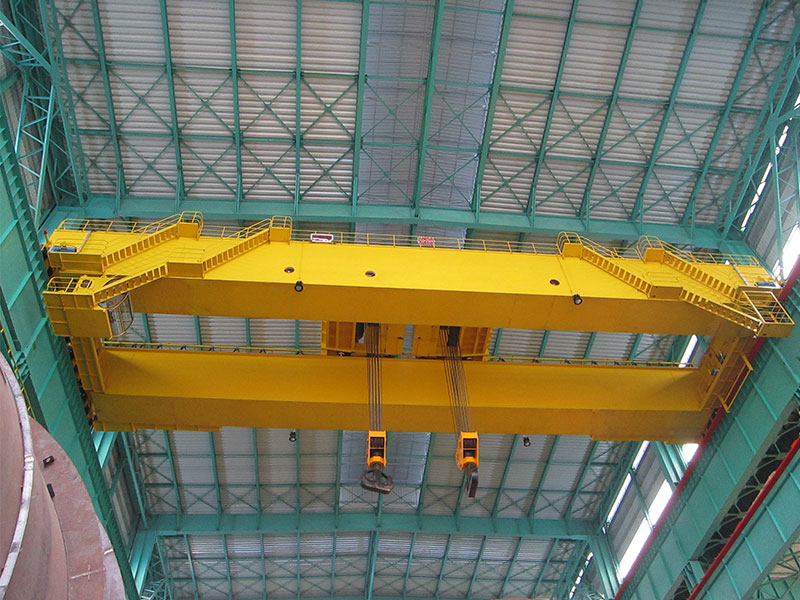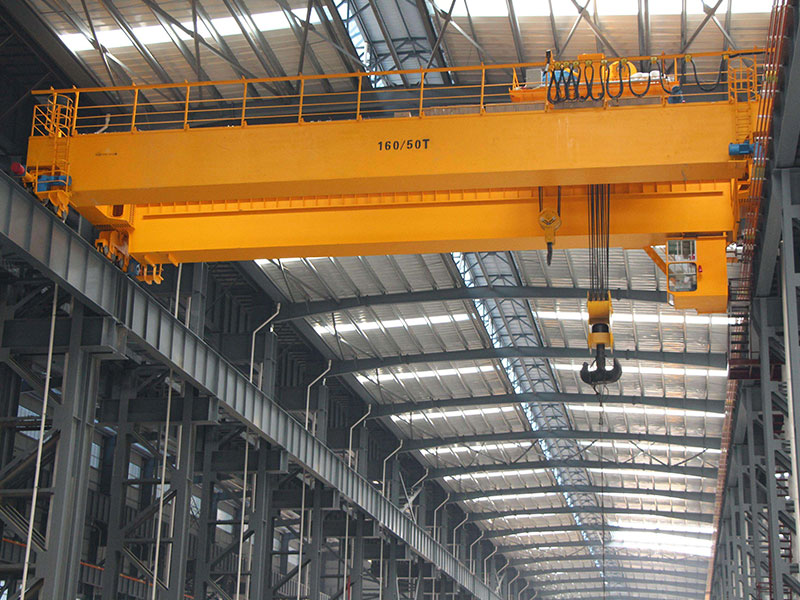Double girder overhead cranes are integral to many heavy-duty industrial applications, such as in manufacturing plants, steel mills, power plants, and shipyards. These cranes are designed to lift and transport heavy loads over large spans, providing efficiency, safety, and reliability. However, ensuring these qualities requires stringent quality control (QC) throughout the manufacturing process. In this article, we will explore the importance of quality control in double girder overhead crane manufacturing, discussing its impact on safety, reliability, performance, and customer satisfaction.

1. Ensuring Safety Standards
Safety is the paramount concern in any lifting operation, and double girder overhead cranes are no exception. Due to their heavy lifting capabilities, any failure in their structure or operation can lead to catastrophic accidents, endangering both personnel and property. Quality control is essential to ensure that all components of the crane, from the girders to the hoist and the control systems, are manufactured and assembled to the highest safety standards.
Quality control measures such as non-destructive testing (NDT), load testing, and weld inspections help identify potential defects or weaknesses in materials and fabrication processes. Regular inspections during manufacturing can detect cracks, voids, or improper welding that could compromise the crane’s structural integrity. Ensuring safety through rigorous QC reduces the risk of accidents, protects the workforce, and complies with national and international safety regulations like ISO, OSHA, and FEM standards.
2. Guaranteeing Structural Integrity and Reliability
Double girder overhead cranes are subjected to heavy loads, dynamic forces, and continuous operations in demanding environments. Their structural integrity must be impeccable to withstand these conditions without failure. Quality control processes in manufacturing include material certification, dimensional accuracy checks, and alignment inspections. Each overhead crane component, such as the girders, end trucks, and hoists, is verified to meet strict specifications.
The reliability of a crane also depends on the precision of its moving parts, such as the trolley and hoist mechanisms. Quality control ensures that these components are machined accurately, assembled properly, and tested rigorously. A reliable crane minimizes the likelihood of breakdowns, reducing downtime and maintenance costs for the end user. Furthermore, reliable cranes contribute to uninterrupted production processes, enhancing overall operational efficiency.

3. Achieving Optimal Performance
The performance of a double girder overhead crane is critical to its effectiveness in handling heavy loads efficiently. Performance parameters like lifting capacity, speed, and stability are directly influenced by the quality of materials and workmanship. Quality control during the manufacturing process ensures that the crane meets its specified performance criteria.
For instance, using high-quality steel with the right tensile strength and elasticity is crucial for the crane’s girders to handle heavy loads without deformation. Similarly, precision in the assembly of electrical systems and control panels is vital for smooth operation. Comprehensive testing, such as load testing and endurance testing, is part of QC processes to verify that the crane can perform optimally under varying loads and conditions.
4. Enhancing Durability and Longevity
Double girder overhead cranes are significant capital investments, and their longevity is a key consideration for buyers. Quality control in the manufacturing process enhances the durability of these cranes, ensuring they can withstand harsh environments, such as extreme temperatures, corrosive conditions, and heavy usage over long periods.
Quality control processes such as surface treatment checks (like painting and galvanizing), rust prevention measures, and proper sealing of electrical components protect the crane from environmental factors that could cause wear and tear. By manufacturing cranes that are durable and long-lasting, manufacturers can provide value to customers, reduce the need for frequent repairs or replacements, and lower the total cost of ownership. To learn more, visit website https://aicraneliftingsolution.com/
5. Building Customer Trust and Satisfaction
Manufacturers who prioritize quality control in their processes build a reputation for delivering high-quality, reliable products. This reputation is crucial for gaining customer trust and satisfaction, which in turn drives repeat business and positive word-of-mouth referrals. Customers investing in double girder overhead cranes look for manufacturers who guarantee performance, safety, and reliability, all of which are underpinned by stringent quality control measures.
Providing cranes with consistent quality also reduces the chances of warranty claims and service disputes, as customers are less likely to encounter problems related to poor workmanship or substandard materials. An effective quality control program demonstrates a manufacturer’s commitment to customer satisfaction and long-term partnerships.
6. Complying with Industry Standards and Regulations
Compliance with international quality standards and regulations is mandatory in the crane manufacturing industry. Standards set by organizations like ISO (International Organization for Standardization), ANSI (American National Standards Institute), and OSHA (Occupational Safety and Health Administration) dictate the quality requirements for manufacturing cranes. These standards cover aspects such as design, manufacturing, testing, and safety.
By adhering to these standards, manufacturers not only avoid legal and regulatory penalties but also ensure their products are globally competitive. A robust quality control system is necessary to meet or exceed these standards, ensuring that every Aicrane eot crane manufactured is compliant and can be safely operated in any country or environment.
7. The Role of Quality Control Processes in Crane Manufacturing
Quality control in crane manufacturing is a multi-stage process that begins with the procurement of raw materials and continues through design, fabrication, assembly, testing, and final inspection. Here is a breakdown of key QC processes:
- Material Inspection: Verifying the quality and specifications of raw materials like steel, cables, and electrical components to ensure they meet the required standards.
- Welding Inspection: Ensuring welds are performed by certified welders and meet specified strength and quality requirements through NDT methods like ultrasonic testing or magnetic particle inspection.
- Dimensional Checks: Confirming that all components are manufactured to precise dimensions and tolerances, ensuring proper fit and function during assembly.
- Load and Performance Testing: Conducting load tests to verify the crane’s lifting capacity and performance under specified conditions.
- Final Inspection and Certification: A comprehensive inspection of the assembled crane, including checking for alignment, controls, safety systems, and labeling, followed by certification that the crane meets all safety and performance standards.
Conclusion
The importance of quality control in double girder overhead crane manufacturing cannot be overstated. Quality control ensures the safety, reliability, performance, durability, and compliance of cranes, which are essential to meeting customer expectations and industry standards. For crane manufacturers, investing in robust QC processes is not just about meeting minimum requirements; it is about building a reputation for excellence, safety, and innovation. By prioritizing quality at every stage of the manufacturing process, companies can deliver cranes that not only perform exceptionally well but also stand the test of time in the most demanding environments.